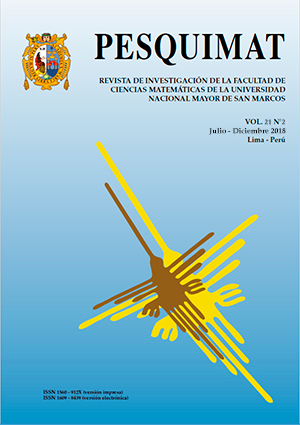Estimation of a life table for the Peruvian national pension system
DOI:
https://doi.org/10.15381/pes.v21i2.15724Keywords:
Mortality table, Kaplan-Meier, graduation, local polynomial regressionAbstract
A static life table is estimated using the nonparametric estimator proposed by Kaplan and Meier and the local polynomial regression technique for the graduation using more than 8 million administrative records collected during the years 2013 to 2017. The results reveal that the gap in life expectancy between men and women is lower than that reported by the current table. Thus, the diference in life expectancy measured at 65 years of age is reduced from seven to two years, explained by a decrease in the life expectancy of women of 2.4 years and an increase in life expectancy from 2.1 years in the case of men. The results also reveal that the net actuarial debt would be overestimated in S=2 billion compared to the officially estimated, this is the result of two opposing effects: a decrease in the reserve estimate in the case of women and an increase in the case of men, with the first effect dominating.Downloads
Published
Issue
Section
License
Copyright (c) 2019 José Artemio Valderrama Torres

This work is licensed under a Creative Commons Attribution-NonCommercial-ShareAlike 4.0 International License.
THE AUTHORS RETAIN THEIR RIGHTS:
a) The authors retain their trademark and patent rights, and also on any process or procedure described in the article.
b) The authors retain the right to share, copy, distribute, execute and publicly communicate the article published in Pesquimat magazine (for example, place it in an institutional repository or publish it in a book), with recognition of its initial publication in the Pesquimat magazine.
c) The authors retain the right to make a later publication of their work, to use the article or any part of it (for example: a compilation of their works, notes for conferences, thesis, or for a book), provided that they indicate the source of publication (authors of the work, magazine, volume, number and date).













